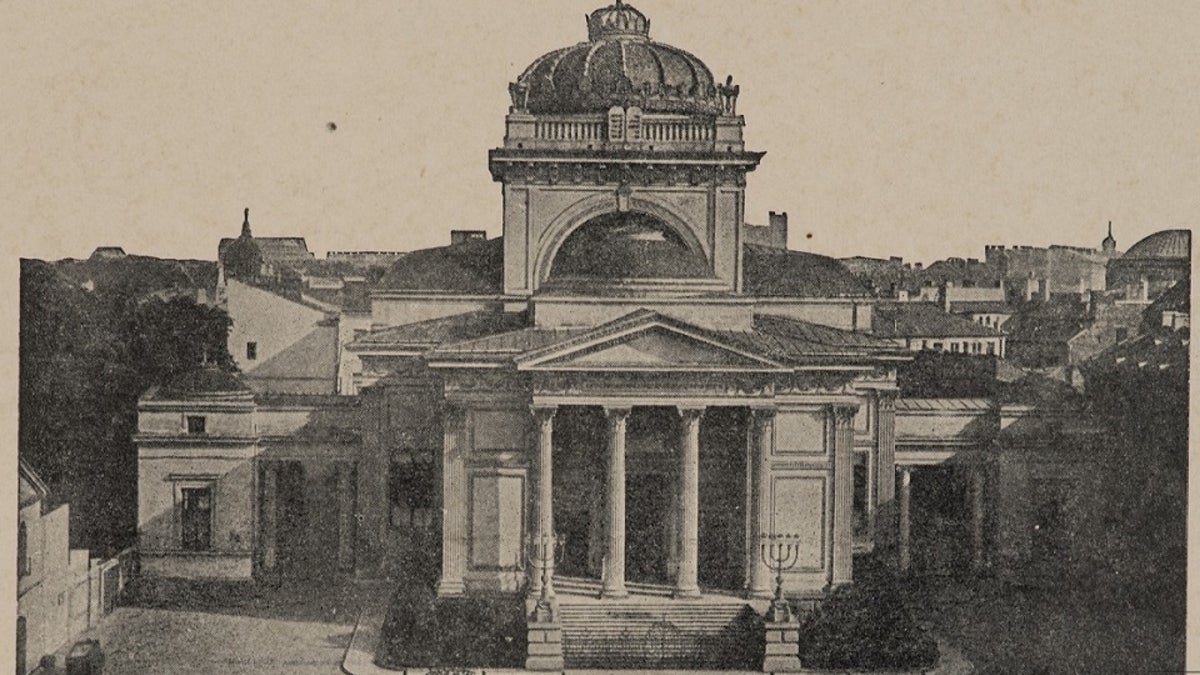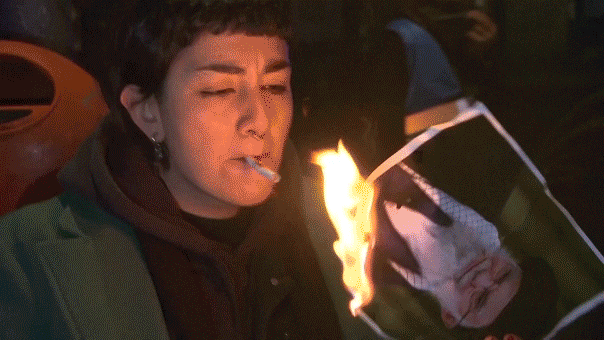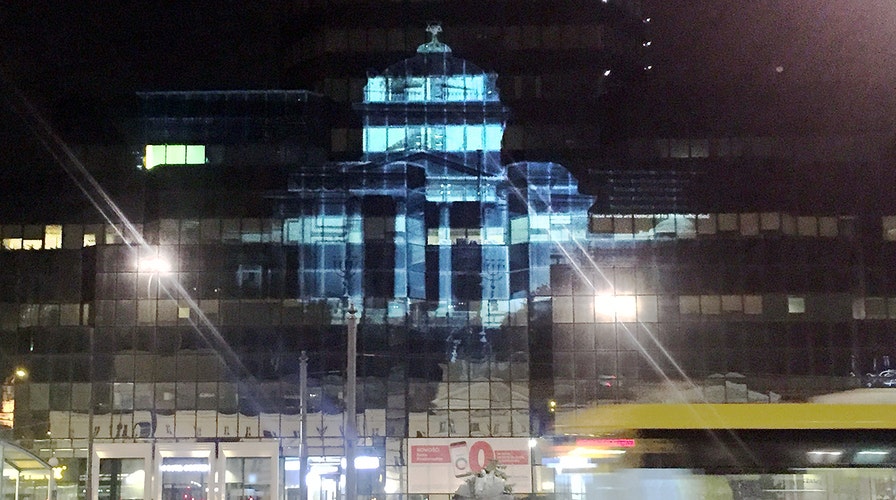The Great Synagogue of Warsaw, destroyed by the Nazis in 1943 during World War II, will re-appear as an image in blue light, brightening the sky above the city Thursday night.
The blue image, a virtual reconstruction projected against a glass building that’s now where the synagogue once stood, will serve to commemorate the 76th anniversary of the Warsaw Ghetto Uprising that began April 19, 1943 when several hundred poorly armed Jews confronted several thousand German troops, resisting deportation to Nazi extermination camps.
A recording of prayers sung by the synagogue’s cantor will accompany the image. The cantor and his family perished in the ghetto.
Opened in 1878, the synagogue was then the largest in the world. Some 370,000 Jews lived in Warsaw before World War II, or one in three residents out of a population of 1.3 million.
After the German invasion of Poland on September 1, 1939, the Nazis drove more than 400,000 Jews into the one square mile Warsaw Ghetto. Between 1940 and 1942, 90,000 Jews died in the ghetto from starvation and disease, said Dr. Michal Trezbacz, head of research at the Polin Museum of the History of Polish Jews, while 265,000 were sent from the ghetto to the Treblinka extermination camp.

The blue image, a virtual reconstruction projected against a glass building that’s now where the synagogue once stood, will serve to commemorate the 76th anniversary of the Warsaw Ghetto Uprising. (Marta Kuśmider )
On May 16, 1943, when the Warsaw Ghetto was firmly under Nazi control, SS leader Jurgen Stroop blew up the Great Synagogue. “The Warsaw Ghetto was no more,” he wrote. “The will of Adolf Hitler and Heinrich Himmler (the SS leader) had been done.”
The ghetto area is now the biggest Jewish cemetery in Europe, said Professor Jacek Leociak, a Holocaust expert from the Polish Academy of Sciences. Many of the dead were buried in the rubble after the Germans crushed the uprising. They razed the ghetto buildings block by block, using flamethrowers to force Jews from cellars where many hid.
“There were no Jews left to retrieve the bodies,” said Leociak. Their remains lie under the rebuilt Muranow district where the ghetto was located.
“The murdered Jews and synagogue can’t be brought back,” said Gabi Von Seltmann, creator of the night display. “But through a combination of remembrance and love we can overcome destruction and death.”
POLAND HONORS FIGHTERS, VICTIMS OF WARSAW'S 1944 REVOLT

15 April 2018, Warsaw, Poland: To commemorate the anniversary of the Warsaw ghetto uprising, polish Artist, Gabi von Seltmann projects a photo of the great Synagogue of Warsaw, on its former location, that now has become a glass Sky Scraper. The synagogue was blown up by the Nazis in 1943. (Natalie Skrzypczak/picture alliance via Getty Images)
Von Seltmann said she launched the project with the support of the Open Republic Association Against Anti-Semitism and Xenophobia and the Jewish Historical Institute Association in Poland.
Warsaw native Marta Dziewulska, the spokesperson for the museum, said the image of the synagogue reminds her that Warsaw was a different city before the Germans razed it and slaughtered the Jews. The tiny presence of Jews in Poland dilutes her own identity, she said, because Jews were so woven into Polish life and now are gone.
“I can’t ask questions about the past from people who are no longer here,” she said.

Opened in 1878, the synagogue was then the largest in the world. Some 370,000 Jews lived in Warsaw before World War II, or one in three residents out of a population of 1.3 million. (Polin Museum of the History of Polish Jews)
Poland’s chief rabbi, Michael Schudrich, will attend some of the commemoration events on Friday. He noted that the number of Holocaust survivors still living dwindles each year. Eventually, they will all be gone, which is why we must continue to bear witness to the Holocaust through our participation in these events.
WARSAW GHETTO UPRISING FIGHTER SIMCHA ROTEM DIES AT 94
“This is a clarion call of what can happen… of what human beings can do to other human beings,” he said. “We must never let this happen again.”
Young volunteers, in a program organized by the museum, will hand out thousands of yellow paper daffodils as part of the commemoration, inspired by the late Marek Edelman, the last surviving leader of the ghetto uprising. Edelman had brought yellow flowers to a large monument in the former ghetto that honors Mordecai Anielewicz, one of the uprising’s leaders.

On May 16, 1943, when the Warsaw Ghetto was firmly under Nazi control, SS leader Jurgen Stroop blew up the Great Synagogue. “The Warsaw Ghetto was no more,” he wrote. “The will of Adolf Hitler and Heinrich Himmler (the SS leader) had been done.” (Polin Museum the History of Polish Jews)
Rabbi Schudrich, recalling the heroism of the ghetto fighters, said a friend asked Edelman if he fought to choose his way of death. Schudrich quoted Edelman’s reply: “No, we fought in order to choose the way we live until we die.”
This commemoration is especially important now, said Deidre Berger, Director of the American Jewish Committee’s Berlin office.
CLICK HERE FOR THE FOX NEWS APP
“The Warsaw Ghetto Uprising is a story of opposition to an authoritarian regime of terror,” she said, “That should be told with ever greater urgency in a Europe rocked by growing anti-Semitism.”









































